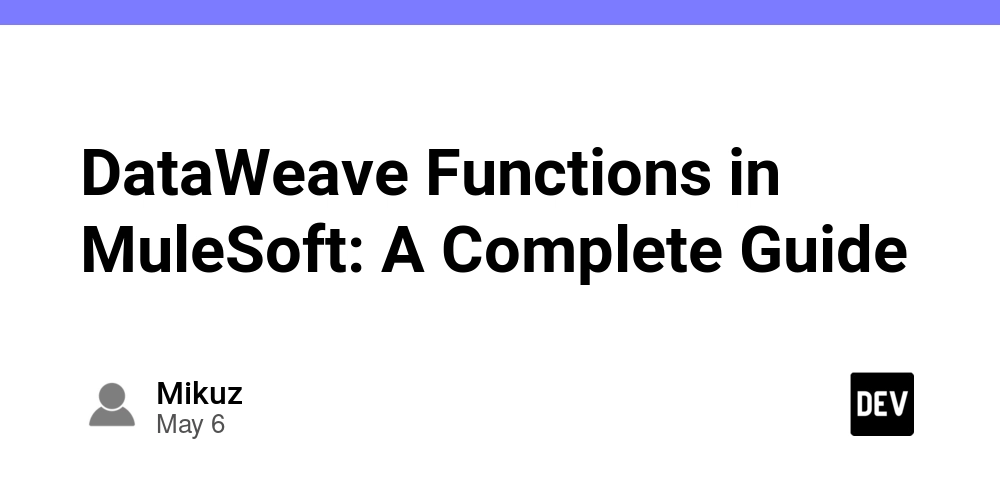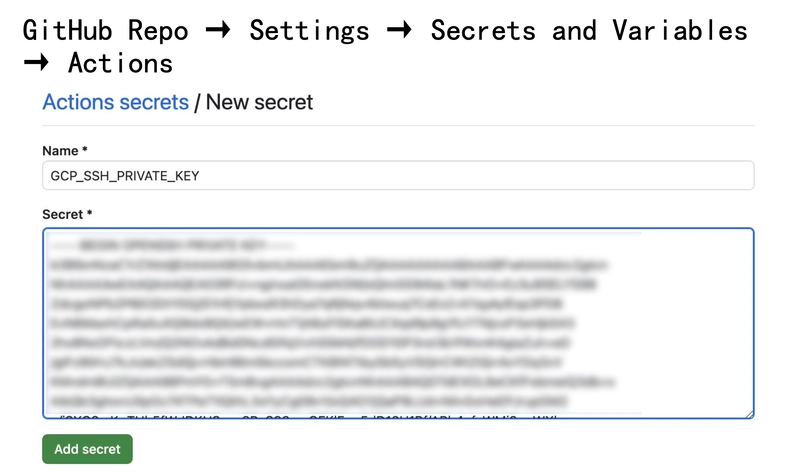DataWeave Functions in MuleSoft: A Complete Guide
Introduction DataWeave serves as MuleSoft's specialized language for transforming data between different formats like JSON, XML, and CSV. At its core, DataWeave functions provide essential tools for developers to manipulate and process data efficiently. These built-in methods handle common tasks such as string manipulation, numerical calculations, and collection processing without requiring complex custom code. By streamlining data transformation operations, DataWeave functions enable developers to build robust integrations and maintain clean, efficient codebases within the MuleSoft ecosystem. Understanding DataWeave Core Concepts Core Language Features DataWeave operates as MuleSoft's primary scripting language, specifically engineered for data manipulation and format conversion. Its robust architecture allows developers to transform data seamlessly between various formats including EDI, JSON, CSV, and XML documents. Function Library Overview The language includes a comprehensive set of built-in functions that support operations on multiple data types—from basic string manipulation to complex object transformations. Custom Function Development DataWeave supports custom function creation, allowing developers to: Extend built-in functionality Build reusable components Encapsulate complex logic Improve code organization Integration Capabilities DataWeave’s tight integration with the MuleSoft ecosystem enables: Seamless connectivity between systems Optimal performance for real-time and batch processing Native support for diverse data formats Development Environment The scripting environment includes: Immediate feedback and testing Access to function documentation Efficient debugging and validation Essential DataWeave String Functions Text Manipulation Fundamentals String functions offer precise control over text processing, ensuring data consistency and formatting across systems. Case Modification Functions upper(): Converts text to uppercase lower(): Converts text to lowercase Useful for: Standardizing data formats Enabling case-insensitive comparisons Text Search and Replacement contains(): Checks if a substring exists replace(): Substitutes one substring with another String Parsing Operations splitBy(): Divides text based on a delimiter substring(): Extracts text using index positions Pattern Matching Functions startsWith(): Checks if text starts with a pattern endsWith(): Checks if text ends with a pattern Best Practices Prioritize code readability Combine string functions judiciously Regularly test string logic for consistent behavior Numeric Functions in DataWeave Mathematical Processing Capabilities DataWeave’s numeric functions support: Arithmetic operations Financial calculations Scientific computations Value Normalization Functions abs(): Returns the absolute value of a number Rounding Operations ceil(): Rounds up to the nearest integer floor(): Rounds down to the nearest integer Decimal Handling DataWeave handles decimals accurately, helping avoid: Floating-point errors Inconsistent financial calculations Implementation Strategies Validate numerical inputs Ensure proper data types Handle errors gracefully Performance Considerations Combine numeric functions efficiently Optimize for large datasets Avoid unnecessary complexity in calculations Conclusion DataWeave functions are essential tools within MuleSoft’s integration framework, enabling efficient and maintainable data transformation. They reduce development time and complexity by offering: Pre-built string and numeric functions Support for custom logic Consistent and reusable patterns Mastering DataWeave allows developers to build scalable, high-performance integration flows that adapt to changing business needs. With its intuitive syntax, extensive documentation, and seamless MuleSoft integration, DataWeave remains a powerful asset for handling diverse data challenges in modern enterprise environments.

Introduction
DataWeave serves as MuleSoft's specialized language for transforming data between different formats like JSON, XML, and CSV. At its core, DataWeave functions provide essential tools for developers to manipulate and process data efficiently. These built-in methods handle common tasks such as string manipulation, numerical calculations, and collection processing without requiring complex custom code. By streamlining data transformation operations, DataWeave functions enable developers to build robust integrations and maintain clean, efficient codebases within the MuleSoft ecosystem.
Understanding DataWeave Core Concepts
Core Language Features
DataWeave operates as MuleSoft's primary scripting language, specifically engineered for data manipulation and format conversion. Its robust architecture allows developers to transform data seamlessly between various formats including EDI, JSON, CSV, and XML documents.
Function Library Overview
The language includes a comprehensive set of built-in functions that support operations on multiple data types—from basic string manipulation to complex object transformations.
Custom Function Development
DataWeave supports custom function creation, allowing developers to:
- Extend built-in functionality
- Build reusable components
- Encapsulate complex logic
- Improve code organization
Integration Capabilities
DataWeave’s tight integration with the MuleSoft ecosystem enables:
- Seamless connectivity between systems
- Optimal performance for real-time and batch processing
- Native support for diverse data formats
Development Environment
The scripting environment includes:
- Immediate feedback and testing
- Access to function documentation
- Efficient debugging and validation
Essential DataWeave String Functions
Text Manipulation Fundamentals
String functions offer precise control over text processing, ensuring data consistency and formatting across systems.
Case Modification Functions
-
upper(): Converts text to uppercase -
lower(): Converts text to lowercase
Useful for:
- Standardizing data formats
- Enabling case-insensitive comparisons
Text Search and Replacement
-
contains(): Checks if a substring exists -
replace(): Substitutes one substring with another
String Parsing Operations
-
splitBy(): Divides text based on a delimiter -
substring(): Extracts text using index positions
Pattern Matching Functions
-
startsWith(): Checks if text starts with a pattern -
endsWith(): Checks if text ends with a pattern
Best Practices
- Prioritize code readability
- Combine string functions judiciously
- Regularly test string logic for consistent behavior
Numeric Functions in DataWeave
Mathematical Processing Capabilities
DataWeave’s numeric functions support:
- Arithmetic operations
- Financial calculations
- Scientific computations
Value Normalization Functions
-
abs(): Returns the absolute value of a number
Rounding Operations
-
ceil(): Rounds up to the nearest integer -
floor(): Rounds down to the nearest integer
Decimal Handling
DataWeave handles decimals accurately, helping avoid:
- Floating-point errors
- Inconsistent financial calculations
Implementation Strategies
- Validate numerical inputs
- Ensure proper data types
- Handle errors gracefully
Performance Considerations
- Combine numeric functions efficiently
- Optimize for large datasets
- Avoid unnecessary complexity in calculations
Conclusion
DataWeave functions are essential tools within MuleSoft’s integration framework, enabling efficient and maintainable data transformation. They reduce development time and complexity by offering:
- Pre-built string and numeric functions
- Support for custom logic
- Consistent and reusable patterns
Mastering DataWeave allows developers to build scalable, high-performance integration flows that adapt to changing business needs. With its intuitive syntax, extensive documentation, and seamless MuleSoft integration, DataWeave remains a powerful asset for handling diverse data challenges in modern enterprise environments.








































































































































































![[The AI Show Episode 146]: Rise of “AI-First” Companies, AI Job Disruption, GPT-4o Update Gets Rolled Back, How Big Consulting Firms Use AI, and Meta AI App](https://www.marketingaiinstitute.com/hubfs/ep%20146%20cover.png)






















































































































































































































































































































































































![Beats Studio Pro Wireless Headphones Now Just $169.95 - Save 51%! [Deal]](https://www.iclarified.com/images/news/97258/97258/97258-640.jpg)







































































































